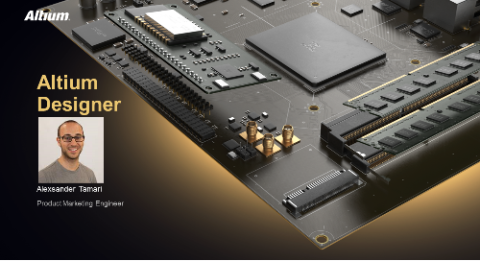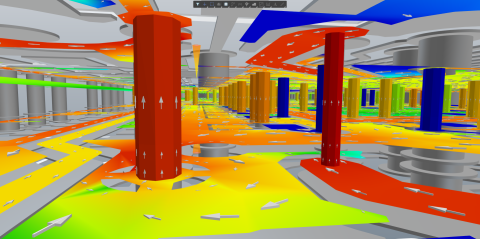What’s New in Altium Designer 18 Webinar Recap April 19, 2018
April 19th 2018. A beautiful thursday morning and a great day for an Altium Designer webinar. I gather my things and go to the recording studio...
In case you missed our Altium Designer 18 live webinar, no worries. You can catch up here with the video recording and presentation slides. If you’re not a fan of videos I’ll try my best to summarize in the webinar notes bellow.
Key Takeaways
Performance Improvements
Multi-threading
Multithreading allows Altium Designer to parse out different tasks to different cores making it much quicker. Multi-threading is used for tasks that can be run in parallel. Its Great for things like polygon pours, gerber generation and DRC checks, things that do not have to be calculated sequentially. Its to be noted that smaller, simple designs will probably not notice a difference in performance but users that work with larger, more complex designs will.
64 bit
Now that Altium Designer is 64 bit its able to utilize much more memory than its predecessors, giving the user a faster and smoother design experience.
Selective Optimization
Certain tasks in the software have been completely rewritten to be much more efficient. Examples of this would be gerber generation and net building. Our R&D team went through and reduced the amount of calculations Altium needed to do to complete a task without losing any data. They’re pretty clever.
New User Improvements
Properties Panel
The interactive properties panel provides universal editing access to the properties of documents and objects in design editors. The panel changes its content based on the document or object that is currently selected and presents specific properties and settings that relate to that document/object. For example if you click on a component in the schematic the properties panel will show the designator, description as well as parameters and pin information. And when in the PCB the properties panel will show similar information just slightly geared for PCB. The properties panel is a work in progress and will continue to improve.
View Configuration Panel
The view configuration panel is used to configure what is currently displayed in the workspace and how it is displayed. This includes layer visibility and color, object visibility and transparency, masking and dimming levels, the current single layer mode, and a number of additional workspace display features, such as the display of net names on pads, vias and tracks. This is a work in progress and will continue to improve.
Multi-Board Assemblies
Altium Designer 18 introduces true system-level design that connects both logical system design and the physical board assembly. In the Multi-board schematic environment is where one is able to logically connect the seperate board modules together. Once connected use the connection manager to manage the connectivity across designs.
Within the multiboard assembly environment one is able to physically connect the separate PCBs in 3D space. The multi-board environment also has 3D collision checking to make sure everything fits perfectly. And if a change needs to be make to a components placement, changes can be pushed to the child PCB.
Q&A
Q: Does Power/Signal integrity work in multi-board?
A: Not at this moment. For first steps in multi-board design we are focusing only on basic functionality for wiring diagram creation and physical assembly. Any analysis capabilities could be following steps.
Q: How does Annotation work in multi-board?
A: There are no annotation functionality in Multi-board design. On schematic level user can define designators for modules and they will used in assembly. Any components designator always taken from child PCB projects because we are support only down-to-top design. Later we plan to have up-to-bottom approach and then annotation will more flexible.
Q: Can you export/import a multi-board assembly to/from a MCAD tool?
A: Import yes, export not at this time. This is the one of the high priority task for next release!
Q: Can 3D models be attached to a library component? How?
A: Yes. Check out our documentation to learn how. LINK
Q: Can you export a multi-board 3D PDF?
A: Not currently available for multi-board. This is also going to be one of the key features for multi-board design in next release.
Q: How do I check the electrical connections between boards in a multi-board project?
A: There are a few electrical rules which could be checked in multi-board design (see Projects>Project Options>Error Reporting for multi-board design projects). Also, for better visual representation about any connectivity conflicts we recommend to use Design>Connection manager LINK
Q: What is the recommended file format to import a 3D mechanical enclosure
A: The best way to transfer data to MCAD is Parasolid LINK, because this format support to export copper and it has light size. Also, STEP or IDF could be used here.
Q: Can I generate BOMs for my multi-board projects
A: Yes. Add a BomDoc to the multi-board project. LINK
Q: Can you stack and intersect 3D models with DRC being valid?
A: Yes. You would need to adjust your design rules for a specific component. LINK


